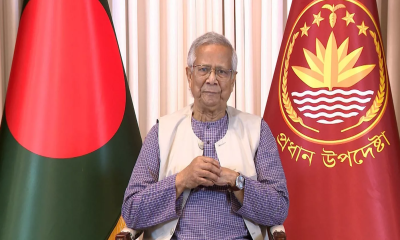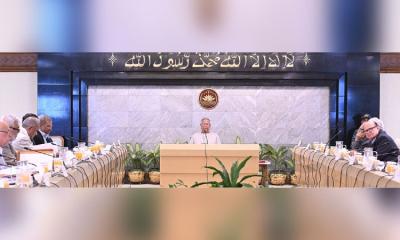When Bangabandhu Sheikh Mujibur Rahman made a public announcement of his Six-Point Plan for regional autonomy, he was essentially envisaging a restructuring of the state of Pakistan.
The broad nature of his quest for full autonomy for East Pakistan notwithstanding, the future founder of Bangladesh, as he spelt out the details of his plan at a press conference in Lahore on Feb 5, 1966, was letting the ruling classes of Pakistan know that if the state was to be of benefit for all its regions and all its ethnic groups, it would need to undergo a major change.
That change was what the Six Points offered. In hindsight, one could argue that the Six Points were a reminder, in however tentative a form, of the last-ditch move made for India to survive as a united country on the basis of the Cabinet Mission Plan of 1946.
The form and nature of India as it would have emerged in light of the plan proposed by the Cabinet Mission would certainly have meant devolution of powers to the federating units and especially to those regions where Muslims were in a majority.
The good bit about the Cabinet Mission Plan was that for all the wrangling which underlined discussions on it, it was eventually accepted by both the Congress and the Muslim League. Not many Muslim Leaguers were happy that Mohammad Ali Jinnah, only six years after the adoption of the Lahore Resolution, had acceded to the plan to have India remain a united, unified state.
But just as sentiments around the plan were beginning to coalesce around the idea of a single, undivided India, Jawaharlal Nehru poured cold water over it. The Congress, he averred, had agreed to nothing. In other words, having accepted the Cabinet Mission Plan, Nehru and his party were now repudiating it.
It was a godsend for Jinnah and the Muslim League. They lost little time in wriggling out of the deal and calling for a ‘Direct Action Day’ on Aug 16, 1946. The result was a bloodbath in Calcutta, leaving anywhere between 5,000 and 10,000 Hindus, Muslims and Sikhs dead in four days of rioting.
After Aug 16, the thought of India remaining united lay crushed. In the year following, with the partition of India by Lord Mountbatten, a man in a terrible hurry, 14 million people were displaced and two million lay dead. As the poet Faiz Ahmed Faiz would speak for so many others, it was a pock-marked dawn of freedom.
In the very city where the so-called Pakistan Resolution had been adopted in March 1940, Sheikh Mujibur Rahman was informing the ruling classes and indeed all federating units of Pakistan (though One Unit was the basis of politics in West Pakistan) that the time had arrived for a reconfiguration of the state.
The reasons were obvious and had to do with the palpable discrimination exercised by the powers that were against the Bengalis of East Pakistan. In the civil service, in the armed forces, in industrialisation, in foreign exchange earnings resulting from the export of jute and tea — grown in East Pakistan — it was the Bengalis who were getting a raw deal.
In essence, the Six Points were a means to a preservation of Pakistan under new and better arrangements, those which would also be applied to the provinces of Sindh, Baluchistan and the North-West Frontier Province (Khyber-Pakhtunkhwa today).
The Six Points were a clear demarcation of powers between the centre and the provinces and autonomy for East Pakistan was to be the first step toward a new consolidation of the state.
Once the provisions of a separate currency or separate reserve bank, a para-military force for East Pakistan were acknowledged through constitutional means, the remaining provinces would be brought under the purview of the Six Points.
Acceptance of the Six Points would have ensured an inauguration of proper democracy in Pakistan. The violence unleashed by the Pakistan army in March 1971 on Bengalis certainly enhanced the tempo of Bengali independence, a process which, had the Six Points been accepted, would certainly have come about in the five years or so after the December 1970 elections.
In effect, with Bangabandhu making it known in 1970 that the general election scheduled for later that year would be a referendum on the Six Points, the path to a reform of the state lay clear. The mandate he and the Awami League received on 7 December from the Bengali nation was a popular decision the Yahya Khan junta and the establishment in Rawalpindi ought to have acknowledged.
It is a pity that at the constitutional talks which took place in Dhaka between Bangabandhu and Yahya Khan and their teams, the junta — as also ZA Bhutto and his People’s Party — in March 1971 did not reflect on the past, on the terrible ramifications of the collapse of the 1946 Cabinet Mission Plan. Of course, as events were to subsequently prove, the regime and its political allies in West Pakistan had little intention of seriously negotiating a way out of the crisis.
In contrast, the Awami League had already prepared its draft constitution through which the Six-Point formula would serve as the basis of a new relationship between the two wings of Pakistan. It remains testimony to the good faith of Bangabandhu and the Awami League that at the eleventh hour, even as the Pakistan army readied itself to inflict Operation Searchlight on the Bengalis, they proposed a confederation for Pakistan.
Had a constitutional settlement come about in March 1971, much good would have come of it for the state of Pakistan. In the first place, East Pakistan/Bangladesh would for the very first time in its history have assumed charge of its own affairs even as it prepared to go for independence through peaceful arrangements with the ruling circles of West Pakistan. In the second, the four provinces in West Pakistan would have replicated Bangladesh in terms of autonomy and hence the means of supervising their own governance within Pakistan.
A settlement of the constitutional question on the basis of the Six Points in March 1971 would have cleared the way for the Pakistan army to be divested of its propensity to interfere in politics, would have left its fortunes in the hands of the federating units of the state.
In equal measure, the bloated and powerful civilian bureaucracy, which had been dominating Pakistan since the 1950s and especially since the emergence of General Ayub Khan on the scene would have been reformed and made leaner and made to work in deference to the authority of elected governments.
The Six Points would have been a brilliant opportunity for political parties to assert themselves in West Pakistan, to let Pakistan’s people know that political leaders and parties, voted to power by the exercise of adult franchise, would have primacy in the country.
When Bangabandhu Sheikh Mujibur Rahman outlined the Six Points in Lahore on 5 February 1966, he was offering a way out of bureaucratic-military regimentation for the people of Pakistan’s five provinces. The failure of the ruling circles to consider the points in political terms would lead to Bangladesh’s guerrilla struggle against the state of Pakistan and its emergence as a sovereign state.
In Pakistan, the myopia of the junta in 1971 would contribute to more of misery for the people of Pakistan. The shadow of the military, fifty years after the rise of Bangladesh, looms large on the tenuous politics which goes for democracy in Pakistan.
This article was originally published in BDNEWS24.
The author Syed Badrul Ahsan is a politics and history analyst




-20251228011000.webp)




















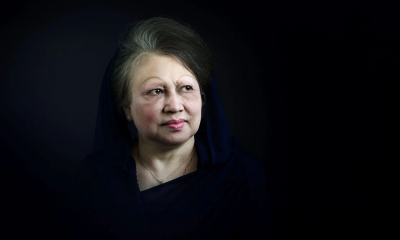
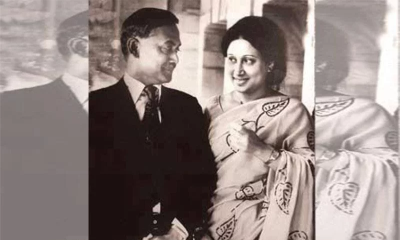

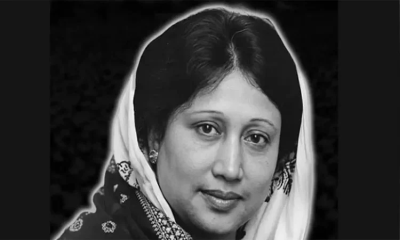

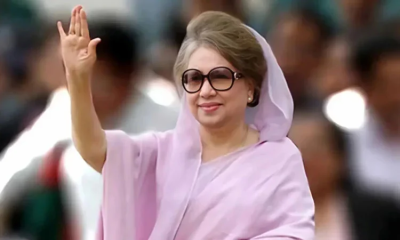

-20251229113834.jpg)

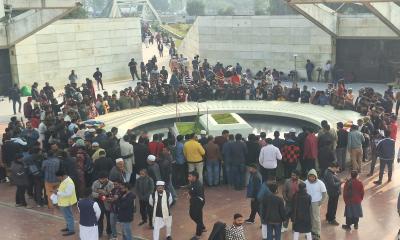

-(2)-20260102070806.jpeg)

